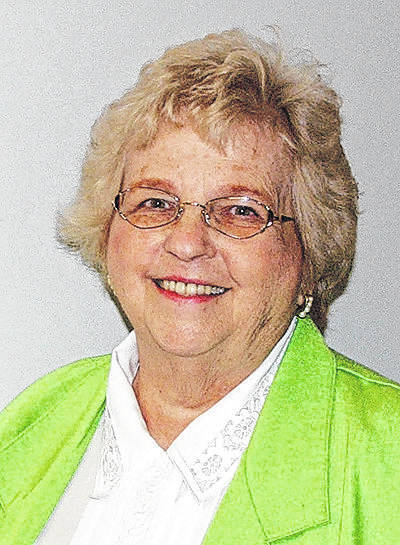
I have been suggesting some historic places in Greene County to visit while the COVID-19 restrictions remain in place.
Greene County is blessed to have several original bridges still standing all of which have been restored and kept in good repair by the Greene County Engineer’s Office. Maybe you would like to visit some or all of them this spring.
Most people enjoy looking at pictures of covered bridges. Many Christmas cards are decorated with scenic bridges and I have friends who plan their vacations around visiting as many covered bridges as possible.
When I was a child, there was a covered bridge not far from my grandparent’s home. Dad would stop the car in the middle of the bridge and honk the horn a few times so we could delight in the wonderful echo it produced.
A driving tour will take you to several different parts of the county to view the bridges, some are still open for traffic, others only for foot travel, but each is unique in its own way and worthy of the time to get out and really take a look at what is inside.
Of course, one of the easiest materials for construction more than 150 years ago was wood which was plentiful, so it was logical to utilize this natural nearby resource when considering construction of a bridge.
As the county grew, the need for bridges increased. A bridge floor with no covering would have been adequate for a short while, but the constant rain, snow and sleet would certainly have worn the timbers too quickly, so the logical means to protect the surface was to cover it. There was another advantage wherein if you were driving your horse and buggy and a summer shower came up, the bridge was a splendid place to stay dry for a while.
In his book “Covered Wooden Truss Bridges of Greene County, Ohio” James H. Shell describes the types of trusses used to construct the majority of the bridges.
One of those was the “Smith Truss” designed by Robert W. Smith, who was born in Miami County. He received early education from his mother, and attended public school for a period of only a few weeks but learned to read and also some geometry. He went to work for a carpenter for a year and then went into business for himself. He claimed that he was the first builder to put up large barns with self-supporting roofs. This was beneficial, not having posts in the center of the barn.
He designed what came to be known as the “Smith Truss Bridge.” This design was so useful that his expertise in building bridges was very much in demand and so he moved to Toledo where he opened the Smith Bridge Company. He received a patent on his design in 1867.
According to Shell, when Smith began his business, the standard was one 300-foot bridge constructed in one year. However, once the technique was perfected, his company was able to provide five bridges in 1867 and by 1869 a total of 75 bridges were constructed throughout Ohio by his company.
The very popular Smith Truss was used in constructing the Stevenson Road Bridge, which has ample parking area but is now a walking bridge.
William Howe also designed a truss which was used extensively throughout Greene County. Charlton Mill Bridge, Cemetery Road Bridge and the Ballard Road bridge are all examples of his work. His truss design was also used on the majority of the railroad bridges which were constructed in the area.
Henry Hebble was a native of Pennsylvania and moved to Bath Township around 1841. He began his working career as a railroad engineer but soon became more interested in carpentry. He was well known in the community as a builder of houses and then also covered bridges.
The Cemetery Road Bridge and the Charlton Mill Bridge are but two examples of his work. If you walk through any of the bridges, you should be able to see the different modes of construction used.
The bridges you can visit are the Charlton Mill Road Bridge, Stevenson Bridge, Engle Mill-West Bridge, Ballard Road Bridge, and the Cemetery Road Bridge which was moved to Glen Helen in 1979. Moving that bridge was quite an adventure; only a portion was moved, but during the night before the move, some of the ropes gave way, and the bridge threatened to float downstream. All was well; it was rescued and transported on wheels while many folks gathered in downtown Xenia to watch this historic event.
Space does not allow for the entire poem to be published here, but Carl E. Smith wrote this about the Cemetery Road Bridge:
“It’s passing away, like the buggy and horse, A relic of ‘days that were better,’ of course, Like the old woolen mill, and the old water wheel, It’s being replaced by new structures of steel. But a picturesque spot on the landscape remains the old covered bridge through the sun and the rains.
It’s wasting away, like the buggy and sleigh, for days that are faster, but better? Nay! Nay! The new iron bridge never shelters from storm. It’s a mere skeleton, in its body and form. But occasional landscapes are picturesque, still, with an old covered bridge, o an old fashioned mill.
So it stands, in the beauty bridging over the creek, like a thing that is doomed, waiting, patient and meek, for the day of destruction of body and frame, like the passing of woodlands, from which it once came. Quaint relic of yesterday — lest we forget, Is the old covered bridge, as it stands with us — yet.”


